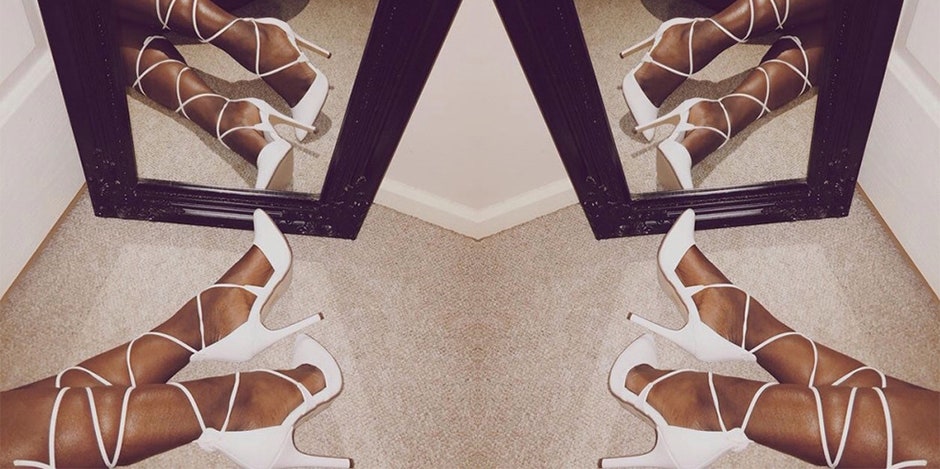5 Incredible Facts That'll Make You Want To Stop Wearing Heels
Science says it's time to break out the flats!
 weheartit
weheartit By: K. Aleisha Fetters
There comes a time in every woman’s life when wearing heels just isn’t worth it anymore. The peep toes, the three extra inches of height, and the fact that your legs look great in them stop outweighing the blisters, the bunions, and your quickly fading will to live.
Sounding more and more like your attitude on sky-high heels? Here are five things that happen when you take off your heels that just might make you retire yours for good. (Or at least make you carry them in your purse and change into them once you get to dinner.)
1. Your legs actually get longer
Heels might make your legs look long—but ditching them will make you legs be long (or at least longer).
In one 2012 study published in The Journal of Applied Physiology, researchers found that habitual heel wearers not only walk with shorter strides (both when they wear heels and go barefoot); they have shorter calf muscles, too. That’s because when you're used to walking around with your foot pointed, your heel spends a lot of time up by your ankle, rarely stretching to its full, natural length.
A combination of stretching, foam rolling, and, most importantly, walking in supportive flats will help your calves get back to their former glory, say researchers.
2. Your back feels SO much better
Heels make your butt look amazing for a reason—they tilt your pelvis, forcing your derriere back back back. That puts increased pressure on the lumbar region of the spine, as well as the muscles that stabilize it, says New York City chiropractor Todd Sinett, author of 3 Weeks to a Better Back.
Some high-heeled women can even experience something called spondylolisthesis—the slippage of one vertebra forward over another—resulting in nerve damage and pain.
When you take them off, though, your spine automatically returns to its proper astronomical position, reducing stress placed on the lower back and easing pain, even that associated with spondylolisthesis.
3. Your heels (not your shoes — the ones on your feet) may hurt
That’s because wearing heels doesn’t just shorten your calves, it shortens your Achilles tendons. When you suddenly switch to flats, bringing your foot back to a 90-degree angle, you up the tension on the too-tight tendons, says doctor of podiatry medicine Krista Archer, an associate of the America College of Foot and Ankle Surgeons and staff member at Lenox Hill Hospital in New York City.
In people with plantar fasciitis, inflammation of the thick band of tissue that connects the heel to the toes, this can aggravate existing heel pain. In others, it may bring on heel pain for the first time.
Over a matter of days, weeks, or if you practically lived in heels before, months, the tendon will return to its normal length, your heel pain will subside, and your heels can end up even happier than they were to begin with.
4. Your runner's knee miraculously disappears
No matter how far your butt sticks out, when you wear heels, your center of gravity shifts forward from where it naturally should be. That means extra strain on the tendons and ligaments in your knees, says Archer. It turns out that the solution to your knee problems might not be to “stop running” after all.
5. Your balance improves
Regular high-heel wear can make you tip over easily—even if you happen to be wearing flats that day.
Case in point: A 2015 study of South Korean airline attendants-in-training found that just a few years of regular high-heel wear leads to strength imbalances between the muscles on the sides of the ankles and those at the front and back, resulting in ankle instability and dramatically worse balance.
Going flat-footed, however, causes the muscles in and around your ankle to work as designed, promoting better ankle stability and balance, say researchers. Striking a perfect pose of the dancer is about to get a whole lot easier.
YourTango may earn an affiliate commission if you buy something through links featured in this article.

